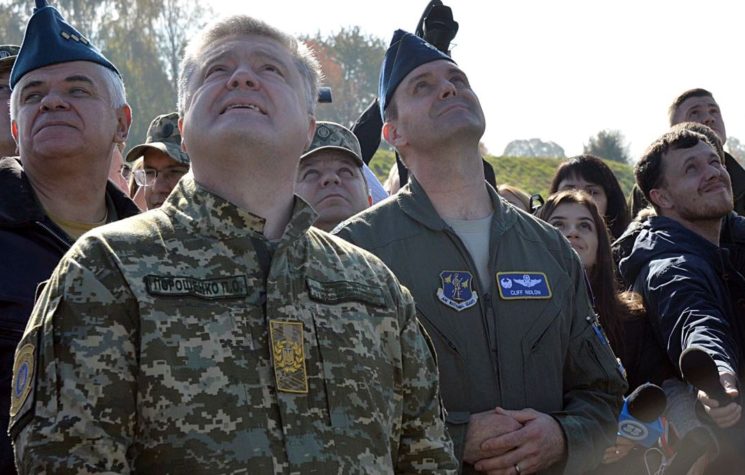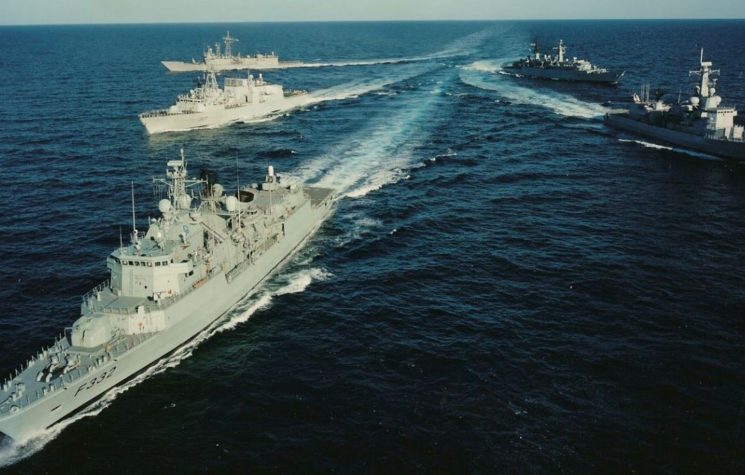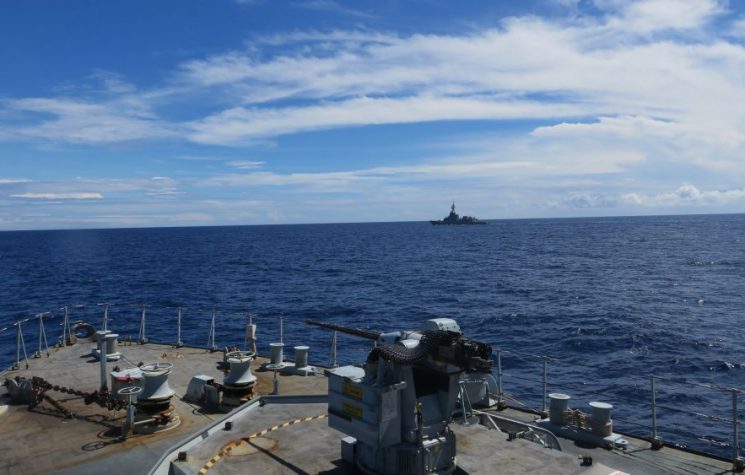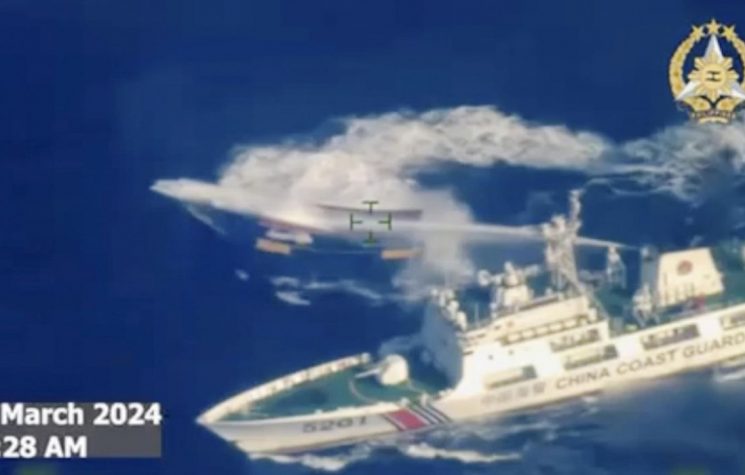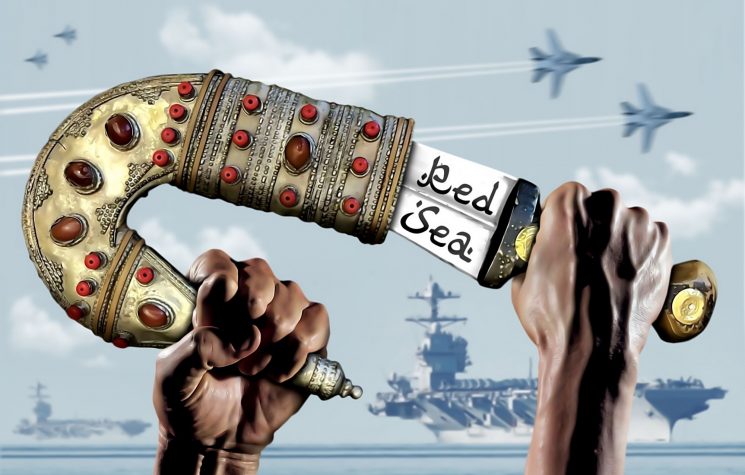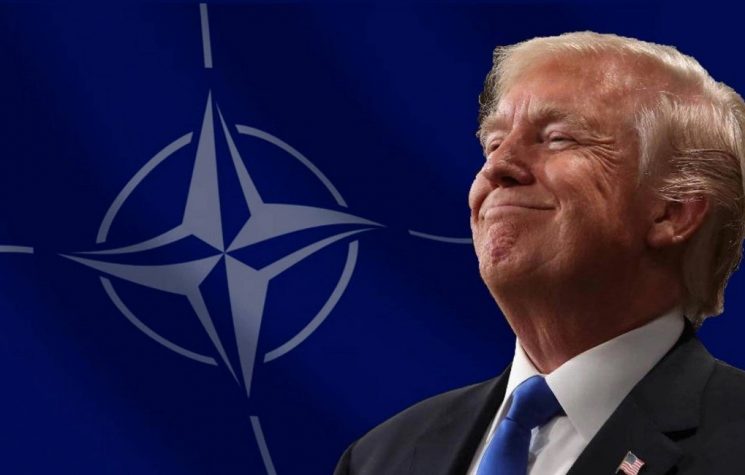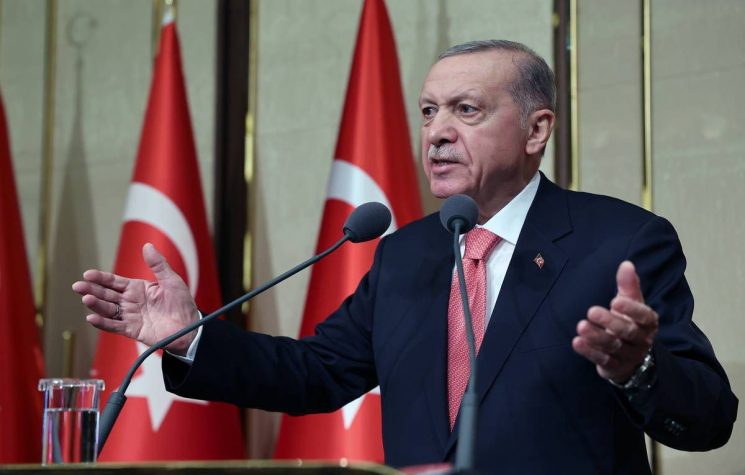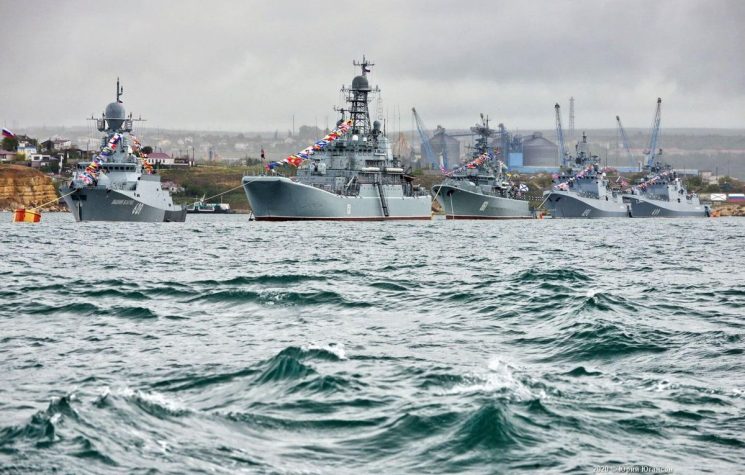It is intriguing to examine the deployment and manoeuvres of US Navy warships, despatched by the Pentagon all over the world to perform pretty much the same task wherever they go — to attempt intimidation of those whom Washington regards as enemies.
The Chief of Naval Staff, Admiral Richardson, visited India 12-14 May as part of Washington’s prodding of China which in this case had the aim to “further strengthen the strategic partnership between the two navies by emphasizing the importance of information sharing and exchange.” This sounds innocuous enough, but India benefits greatly from US cooperation, including receiving information about Chinese submarine movements which are detected by US systems in and around the Malacca Strait. In turn, as the Diplomat reports, India recently decided “to join the United States, Japan, Australia, and the Philippines in sailing through and conducting a naval exercise in the South China Sea,” which also appears harmless but is one of Washington’s provocative “freedom of navigation” fandangos intended to goad China to act against warships that deliberately sail within 12 nautical miles of islands that China, with good reason, considers to be its territory.
From there we move west to the Persian Gulf, where US Central Command Headquarters is located in Qatar, at al-Udeid, the largest air force base in the world, and eighty miles from the HQ of the 5th Fleet in Bahrain. Increasing the vast US military presence menacing Iran, the USS Abraham Lincoln carrier strike group arrived on May 16, and its guided-missile destroyers USS Bainbridge, Mason and Nitze, along with the guided-missile cruiser USS Leyte Gulf were joined by a further two missile destroyers, the USS McFaul and Gonzales. Four B-52H nuclear bombers were deployed to the al-Udeid base on May 10.
Given the number of US combat ships deployed against China and Iran, it might be thought that there aren’t many more available to conduct similar operations intended to intimidate Russia in its home waters, and in this we find full agreement on the part of General Curtis Scaparrotti, the US-NATO Supreme Allied Commander Europe, who told the US Senate Armed Services Committee on March 5 that “I have asked for two more destroyers for EUCOM” because there is a “need for greater capacity particularly given the modernisation and growth of the Russian fleets in Europe.”
When Scaparrotti was asked how Russia might regard the US and NATO having naval forces stationed in the Black Sea region he replied that “Frankly speaking, they [Russia] do not like our presence in the Black Sea, but these are international waters, and our ships should go there, and our planes should fly.”
Why?
It appears that the Deep State in Washington considers it essential to deploy bombers and ships all over the world, thousands of miles from its shores, in regions that have nothing whatever to do with it, in order to establish or maintain US military domination. As put so well by the analyst Danny Sjursen in Antiwar, the US has been developing into “a rogue, hegemonic empire bent on power and destruction” and its recent martial antics have served only to create tension, encourage distrust, and stimulate profits of arms manufacturers.
It was ironic that the first meeting between major US war hawk, Secretary of State Pompeo, and President Putin took place in Sochi, on the Black Sea (where Russia hosted the 2014 Winter Olympics which were outstandingly successful, to the surprise and irritation of Washington and Westminster), because it is in that Sea that the US wants to ramp up confrontation with Moscow.
Pompeo was reported as saying that “There are places that our two countries can find where we can be cooperative, we can be productive, we can be accumulative, we can work together to make each of our two peoples more successful and frankly the world more successful, too. President Trump wants to do everything we can.”
Trump may want to be productive rather than provocative, but the Washington Establishment has no intention of allowing this to happen.
If Washington was sincere about cooperation, the first thing it would do would be to cease the offensive, in-your-face US Naval manoeuvres in the Black Sea, where, according to agreement by US-NATO in Washington on April 4, it is intended there be “a package of measures to improve NATO’s situational awareness in the Black Sea region and strengthen support for partners Georgia and Ukraine.”
In his speech at the Washington meeting, Pompeo declared that US-NATO “must adapt our alliance to confront emerging threats… whether that’s Russian aggression, uncontrolled migration, cyberattacks, threats to energy security, Chinese strategic competition, including technology and 5G, and many other issues.”
So much for being “cooperative” and “working together” with Russia. The man says one thing to the European military alliance that he and the Washington Establishment use to further US policy of world domination, and quite another thing to those it is designed to threaten.
NATO’s Secretary General Stoltenberg followed by informing the gathering that “Right now, one of NATO’s naval groups is on patrol in the Black Sea. And today, it is exercising with Ukrainian and Georgian ships. So we will maintain our focus and our presence in this vital region.”
What for? Do these people imagine for one moment that they can frighten Russia into handing over Russian-speaking, Russian-cultured, Crimea to Ukraine by sending warships to conduct manoeuvres with the Ukrainian navy? (Or, indeed, by any other means?) Can it be possible they believe, sincerely, that the people of Crimea want to be Ukrainian?








